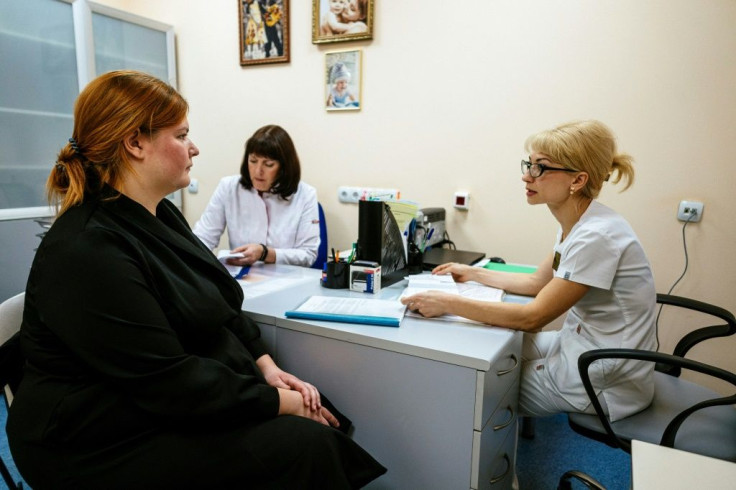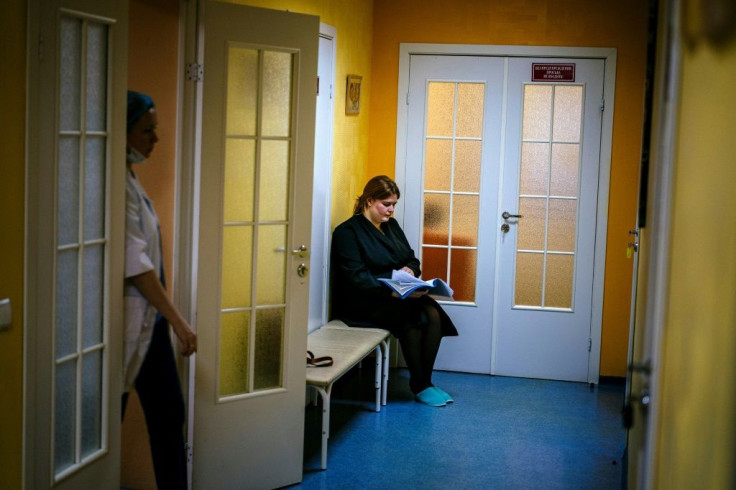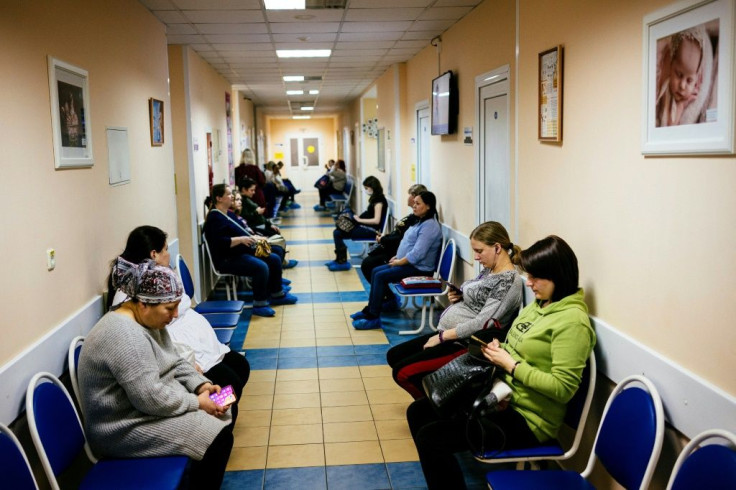Russia Funds IVF Baby Boom To Battle Population Slump

For three years, Valeriya Pashko has been trying to get pregnant. Now her last hope is IVF, provided free by Russia's health service as authorities try to avert a new drop in the birthrate.
"My husband and I are really relieved to be getting reimbursed. This costs a lot of money," said the 23-year-old social worker.
Pashko is having fertility treatment at a perinatal centre in the town of Balashikha just outside Moscow that the authorities describe as a model for the rest of the country.
Boosting the national birth rate is a top priority for President Vladimir Putin, who made this one of the key topics in his state of the nation address this month.
"Russia's fate and its historic prospects depend on how many of us there are," he said, announcing enhanced child benefits and payouts to families for every new baby to help the country "escape from the demographic trap."
Russia saw its population fall to 142.9 million in 2010 after the breakup of the Soviet Union in 1991, when it was 148.3 million. It is now back up to 146 million, but projected to fall again.
In a private clinic, the price of a cycle of in-vitro fertilisation starts at around 100,000 rubles ($1,600), not including the costs of donor sperm and eggs. This is more than three times the median monthly wage.
But since 2013, the IVF procedure, which is the most effective fertility treatment with a success rate of around 30 percent, has largely been state-funded under a compulsory health insurance scheme.
Pashko is set to have her second round of IVF after the first failed. Both will be reimbursed by the state.

"It's so reassuring to have this last chance because I know a lot of couples in their 50s who don't have children because they weren't able to," she said.
At the Balashikha clinic "the number (of IVF procedures) has almost tripled" thanks to state funding, said the head doctor Olga Serova.
Her office is decorated with Orthodox icons and a portrait of Putin, who has made the battle against falling population a national priority.
"This policy of supporting IVF boosts the birthrate and comes as part of the government's project on demographics," Serova said.
The centre's fertility clinic is gleaming and has modern equipment, in contrast to many crumbling provincial hospitals. As one of the best in the country, it welcomes journalists' visits.

Russia's current population of 146 million is predicted to fall by 4 to 12 million by 2035. Those in their 20s now were born during a massive slump in the birthrate amid economic uncertainties, so there are fewer people to become new parents.
In the first 10 months of last year, the population fell by almost 260,000 people, the steepest drop over the past 11 years.
Putin has rolled out a number of policies aimed at encouraging people to have babies since coming to power in 2000.
This month, he called for the birthrate to go up to 1.7 children per woman by 2024, from the current figure of 1.5.
Fertility treatment is part of this strategy.
"IFV isn't going to be the main factor for boosting the population figures but it is part of our work on better pregnancy planning," said Yelena Fyodorova, a gynaecologist at the Balashikha centre.
"And what it does simply is to give couples the chance to have children," she said, a joy that "you can see on their faces."
Nationwide, the number of state-financed IVF procedures per year rose from 46,000 to 78,000 between 2016 and 2018, according to the health ministry.
The goal is to reach 90,000 per year in 2024, which would make Russia a leader in the field, according to the figures of the Russian Association for Human Reproduction.
These procedures are often physically gruelling and lead to 25,000 to 30,000 births per year, making up nearly two percent of total births.
Since last year it has become possible to undergo IVF at private clinics and then get reimbursed, in order to cut down on waiting times.
Russia has very liberal laws on reproductive rights. There are no age limits on assisted reproduction and it is open to single women and unmarried couples.
Even the usually conservative Russian Orthodox Church has found little to object to.
"Russia still has one of the highest abortion rates in Europe. That's the main problem for the Church," said Roman Lunkin, an expert on church relations.
This has led the authorities to mount an active campaign against abortions, long used as a method of contraception.
Annual numbers of abortions fell from 1.5 million to 567,000 between 2010 and 2018, according to the health ministry. Despite the massive drop, abortion numbers still loom large in comparison to the annual birth rate of some 1.6 million babies.
© Copyright AFP 2024. All rights reserved.




















